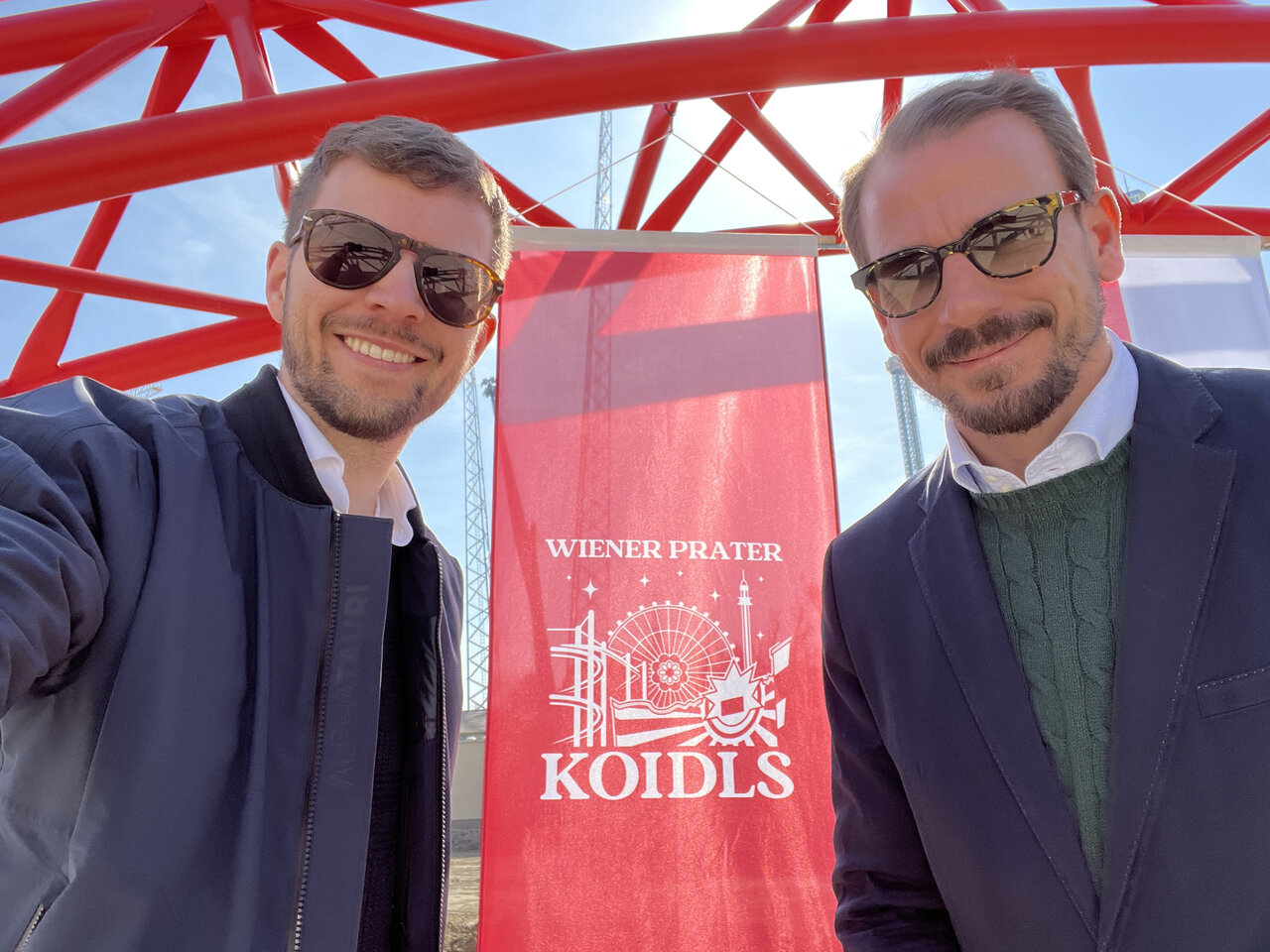Details about “Wiener Looping” Announced

R. Stefan Sittler-Koidl (Ride-Owner) & l. Julian Omonsky (Ride-Designer) are looking forward to the start of construction. Photo: Courtesy of Koidl Vergnügungsbetriebe im Wiener Prater
(eap) This year, a new main attraction is set to open at Vienna’s Wurstelprater: the “Wiener Looping” – a BigDipper roller coaster from German roller coaster manufacturer Mack Rides. Details about the new coaster have now been announced: It is set to reach a maximum height of 31 meters and a speed of up to 81 km/h on a track length of around 518 meters. Two trains will be in operation, each offering capacity for up to eight people and equipped with lap bars. Passengers from a height of 1.3 meters will be allowed to ride.
 Image: Courtesy of Koidl Vergnügungsbetriebe im Wiener Prater
Image: Courtesy of Koidl Vergnügungsbetriebe im Wiener Prater
Already in the queuing area, visual and audio installations will build up suspense. After a chain lift pulls the train up to a height of 31 meters at around 4 m/s, a slow 180-degree curve follows, where visitors can enjoy an impressive view over the Vienna Prater. The ride will then pass a 92-degree drop, designed to give passengers the feeling of a free fall. An airtime hill will be followed by the element that gives the ride its name, a “banana roll” – a curved loop – and then a classic loop. But that’s not all: the vehicle turns into a dive loop via a steep curve, picks up speed again and ends in a helix. A final twisted airtime hill will be followed by a 180-degree turn that leads into a silent magnetic brake, where the ride comes to an end.
With the silent magnetic brake system, the braking force acts directly on the rail and is not limited to the wheel-rail contact, meaning that wetness and dirt have no effect on the braking force. To keep the ride’s noise emissions as low as possible, both running rails and backbone rails will be filled with sand to ensure low-noise operation.
All static and dynamic calculations as well as the construction of all system components were designed in accordance with the applicable regulations of the “Vienna Event Law Edition 2020” and are TÜV-certified. The attraction will be operated by the Prater family Koidl (read also our interview with Prater entrepreneur Stefan Sittler-Koidl in EAP 5/2023). ■





